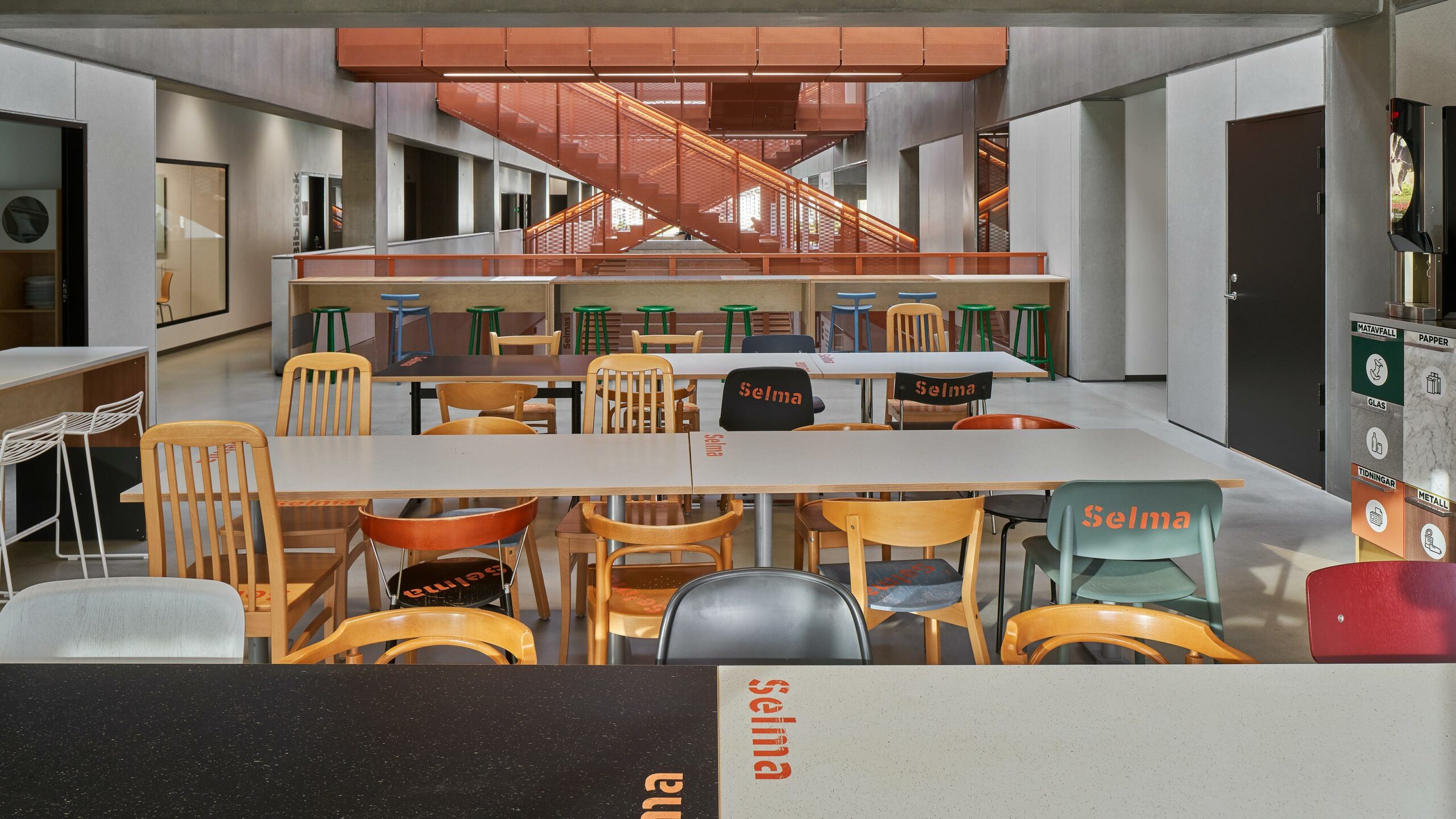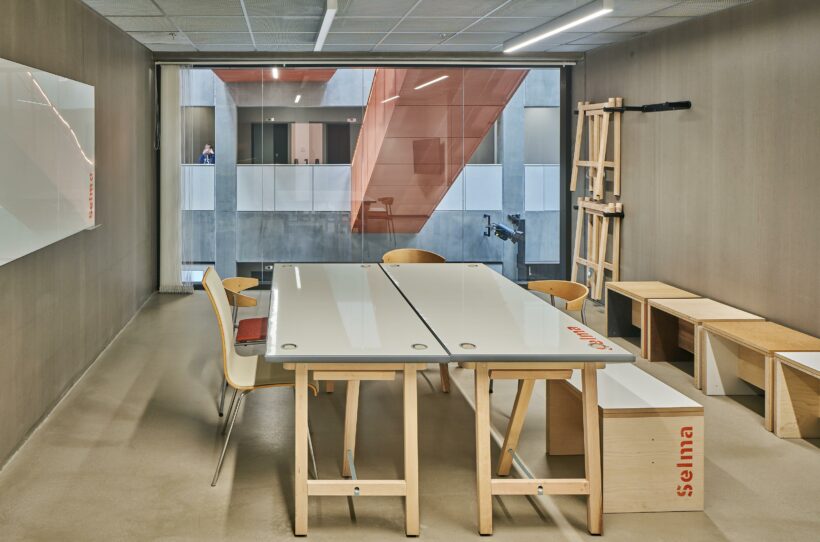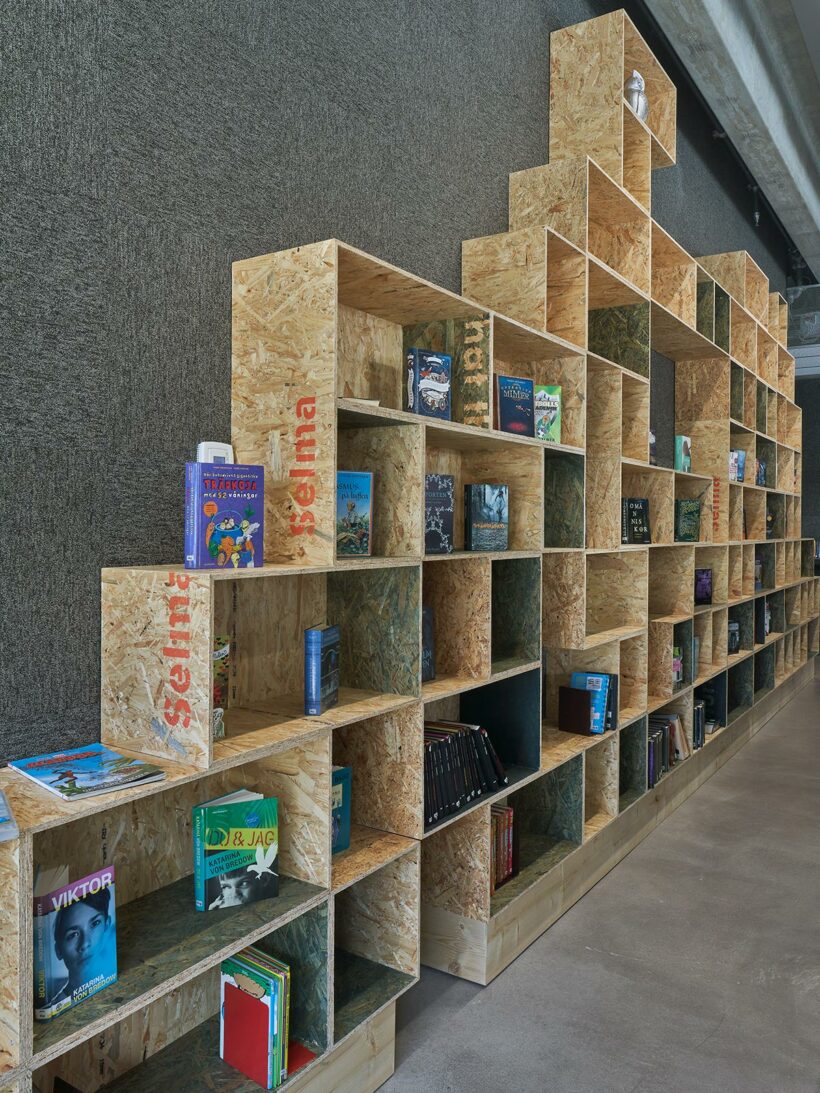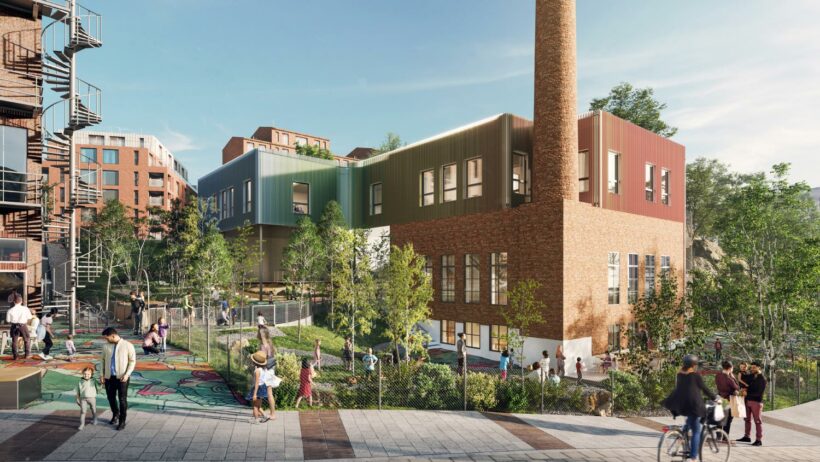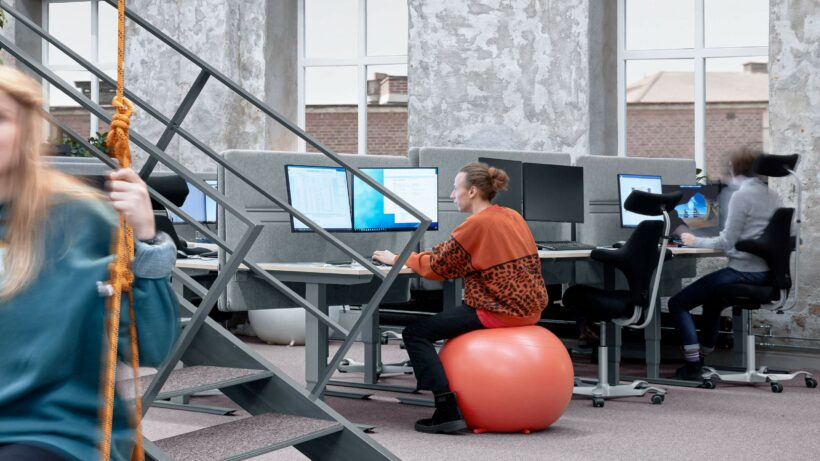Viewing all existing materials as reusable raw material isn’t just a way of saving resources; it is also one of the most effective measures to slow down climate change. The transition to a circular economy requires changes in our lifestyle, attitudes and how we build. White is convinced that, by utilising existing urban areas, buildings and materials to a greater degree, it is possible to create new environments, buildings and products. In addition, new construction also needs to be based on a circular, long-term approach from an early stage of the design process. It might sound obvious, but it requires knowledge and collaboration across many supply chains in order to realise such a process.
In the new Selma Lagerlöf Centre in Gothenburg, great emphasis has been placed on circularity in the form of reused furniture and materials. The centre will be a meeting place for citizens in the Selma Stad district of Gothenburg and includes a library, theatre and municipal offices.
